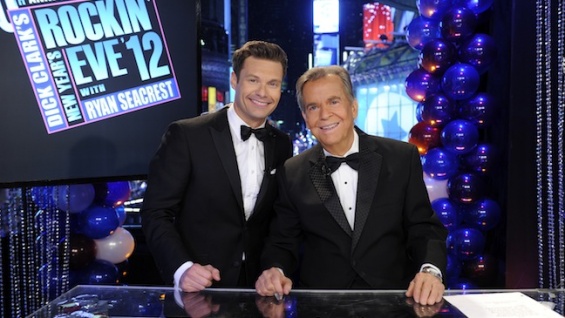
![]()
TV Jock Finally Comes Into Own
NEW YORK — The TV disc jockey show is is finally coming into its own on all three audience levels — network, regional and local. Heretofore strictly a second-choice medium for record plugs, video deejay shows have recently been hailed by many record dealers as a a prime sales stimulant for new releases, both singles and albums.
ABC-TV network deejay show “American Bandstand” was the No. 1 program in its time period ( 3 to 4:30 p.m., across the board) according to the September Trendex Report. The show chalked up a 5.7 rating,with a 35.6 share of audience–62 per cent higher than CBS and 35 per cent greater than NBC. “Bandstand” share-of-audience figure was more than double that chalked up by the web in the same time period in August, prior to the airing of “Bandstand.”
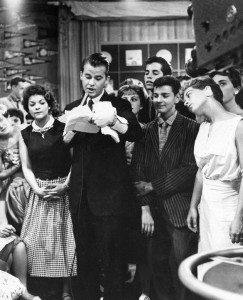
The show emanates from Philadelphia and features a crowd of teen-agers dancing to current pop disks, played by deejay-host Dick Clark, was termed “the greatest stimulant to the record business we as dealers have ever known,” as stated by Raymond Hunsicker, (Tower Grove Music Store; St. Louis) representing the Dealers of Greater St. Louis. Hunsicker added: “many dealers have installed TV sets in their record departments and have extended teenagers an invitation to watch the show in their stores.”
On the regional level, the “Top 10 Dance Party,” a syndicated Victor & Richards package, is currently carried in fourteen different cities. The TV show features local deejays as emcees with a record hop format, with each station following a general programming blueprint sent out weekly by Victor & Richards.
The package, created by writer-producer Alan Sands and executive producer Vic Lindeman, Jr., include detailed outlines for games, merchandising features and contests, with Victor & Richards, providing the prizes in most cases.
In line with this, Sands is currently readying a new feature, tagged “Memento Auction,” which involves the auction of personal items of small value or gag items (such as lock of hair, etc.) donated by record artists. Money raised goes to local charities and the artists garner plugs for their disks. END.
(Information and news source: Billboard; October 7, 1957).
![]()
Mail Pull Rates Clark a Topper in TV Promotions
By JUNE BUNDY
NEW YORK — Dick Clark is considered one of the hottest merchandising and promotional properties in TV, as response to his phenomenal mail-pull response to premium promotion offered on his two ABC-TV network TV shows, “American Bandstand” and “The Dick Clark Show.”

Clark is readying plans to extend his merchandising activities into the teen-age apparel on a big scale. He is also negotiating to star in a third network TV show — a panel program — in January. Meanwhile, Clark this week starts a nationally syndicated column of teen-age advise in the Sunday magazine, This Week, which has a circulation of 12,000,000 readers in the United States.
Although the Young & Rubicam Agency refuses to divulge figures on a contest Clark is conducting on his Saturday show to be named, still currently nameless, (“send in your name suggestion, plus five Beechnut Gum wrappers”) the agency said the response has been “remarkable,” and that Beechnut sales are up 100 per cent since it assumed sponsorship of Clark’s Saturday night show.
An indication of mail pull on the Beechnut contest may be seen in the fact that more than 600,000 copies of Clark’s annual Yearbook, which sells for $1.00, were sold recently in a two-month period, solely on the strength of plugs on Clark’s TV show. Beechnut’s first premium promotion with Clark was a deal whereby television viewers were asked to send 5 gum wrappers and 50 cents for a copy of Jerry Lee Lewis’ waxing of “Breathless.” Two TV pitches by Clark pulled in 48,000 requests for the premium-platter.
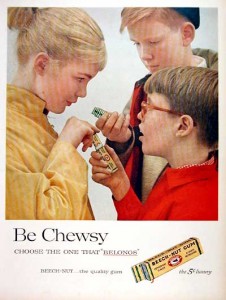
Record mail-pull for Clark was chalked up recently on his annual dance contest, whereby listeners sent in votes for their favorite dancers among studio audience attenders. although no prizes were offered, Clark pull close to a million votes, with 700,000 votes registered during the first week.
Another premium deal Clark conducted for Bosco (offering an EP of “all all the hits” for 50 cents and a wrapper) drew a mail response of 262,000. In the teen-age apparel field, which will shortly be expanded to cover a line of Dick Clark dresses and blouses for teenage girls, Clark now endorses a Mary Jane show and a brand of Bobby Sox. Manufacturer of the latter reports that 120,000 orders were received for the sox (Clark’s picture is on the package) during the products first three weeks on the market.
Rating-wise, Clark’s “American Bandstand” continues to clobber the competition. During the year ending in September, the show ranked among the five top-rated daytime programs, with an average Trendex rating of 8.3 (48 per cent stronger than the average daytime rating of 5.6 per cent) and an average share of audience of 40.8. END.
(Information and news source: Billboard; November 10, 1958).
![]()
http://www.youtube.com/watch?v=geTO-ezljd8
http://www.youtube.com/watch?v=qA7ggOdw-BI&feature=relmfu
http://www.youtube.com/watch?v=msU9ffzSAfA&feature=relmfu
![]()
PH FACTOR NOW CREATIVE FACTOR
LOS ANGELES — The PH Factor, the Los Angeles-based production firm, has changed it name to the Creative Factor. Jim Hampton, president of the firm, cites expansion as the reason for the change. “The name Creative Factor better reflects what we’re all about today as a company,” says Hampton.
The name, according to Hampton, is just one of many preparations for expansion into music, television and multimedia in 1981. END
(Information and news source: Billboard; November 22, 1980).
![]()
Billboard ‘Programming Consultant’
Ken Draper, Programming DB Inc., 6430 Sunset Blvd., Suite 621, Hollywood, CA. 90028. 213-466-4116.
Ken Draper, veteran program director and manager, has staff of skilled personalities, program directors, and production directors under him. Can consult in programming, engineering, management, production, music. Among stations consulted are WPIX-AM in New York. Ken Draper, president; Chris Lane, director of country music programming; Bo Donovan, director of sales and marketing; Jim Hampton, production coordinator and director; John Wellman; music director. END
(Information and news source: Billboard; March 31, 1973).
![]()
PRINCE, HAMPTON TEE L.A. SYNDICATION COMPANY
LOS ANGELES — The PH Factor, a radio syndication firm, has been launched here by Dave Prince and Jim Hampton. The firm is producing “Star Trak,” hosted by Candy Tusken and is slated soon to introduce more products. Hampton and Prince, two veteran radio men (notably in Detroit), formerly worked on “Hitbound From Billboard,” which was syndicated by A/V Programming by arrangement with Billboard Magazine. END
(Information and news source: Billboard; April 23, 1977).
![]()
 Jimmy Hampton (Taylor) on WAAM-AM (Flint), 1965; Jimmy Hampton on WXYZ AM 1270, 1966; Jim Hampton on WJBK AM 1500, 1969; Jim Hampton on WCAR AM 1130; 1970
Jimmy Hampton (Taylor) on WAAM-AM (Flint), 1965; Jimmy Hampton on WXYZ AM 1270, 1966; Jim Hampton on WJBK AM 1500, 1969; Jim Hampton on WCAR AM 1130; 1970
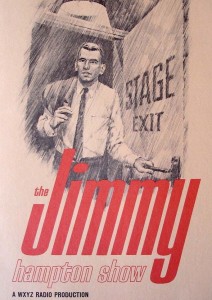
… “What happened to the record? Ladies and Gentleman, did you see this? The record is warped. What do I do now? Should I just, can we shut the station off?”….
In 1958, the legendary call letters WXYZ made an abrupt transition to swing into a new Top 40 music station for Detroit. The 5,000-watter station, new in its concept, did quite well early on battling in head-to-head competition with its rival, WJBK 1500, another Top 40 formatted station. Both WXYZ and WJBK became a dominate force in Top 40 radio in the Motor City then, as both calls would go on to impact further the local pop music scene. Both stations fared very well in their respective broadcasting community service and, it was then that WXYZ grew in radio popularity, for the most part early on during the early 1960s.
During the time WXYZ (“it’s easy to remember”) had ushered in their Top 40 era in the late-1950s through the early 1960s, by now affectionately known as “Wixie,” the station gifted the Motor City in hiring some of the best radio personalities that ever graced the radio airways in the city’s history. Some of the legendary 1270 notables at the time included these great names: Fred Wolf, Paul Winters, Lee Alan, Dave Prince, Joel Sabastian, Steve Lundy, Fred Weiss, Don Zee; and, for a short time in 1966, Joey Reynolds and Jim Hampton.
A native of Michigan, Jim Hampton grew up in Farmington and attended Farmington High School. Hampton honed in on his deejay skills early on by emceeing record hops at Farmington High, as added entertainment right after the school’s basketball games.
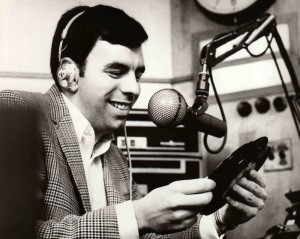
Immediately after graduating high school, Hampton was hired at WXYZ as a ‘record spinner,’ spinning records and filling in commercials while assisting as board-op for Paul Winter, Lee Alan, Joel Sabastian and Dave Prince. According to Jim Hampton, that given opportunity ultimately became “such an amazing experience having to work with some of the best talents in broadcasting. All of them became my mentors, particular Dave, Joel and Lee.”
While greatly appreciative of his limited capacity in radio at WXYZ with a sense of purpose and desire to go well beyond, he landed his next radio job as a deejay “weekender,” which Jim described was located “in the middle of a cow pasture,” at Ypsilanti’s Top 40 station WYSI (presently WSDS).
Having gained further radio fortitude and experience while at WYSI, Hampton’s next stop will be Flint’s own WTRX. In November of 1963, he ultimately was hired as a full-time deejay there by the station GM, who was also responsible giving him the name Jim Taylor as well.
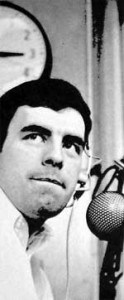
According to “Jim Taylor,” eventually, Hampton’s tenure “at night was the number one” show during the evening hours he was on WTRX. Ever so popular in the Flint area, Terry Knight was already there at the Top 40 station when Hampton was hired at the time. Hampton’s and Knight’s popularity came to full prominence during the times they both shared together on WTRX.
In 1964, Jimmy prematurely left WTRX, having quit by having thought he had a new position lined up with his former first radio love, WXYZ in Detroit. The position open at WXYZ was granted to someone else instead, and Jim found himself without work. WTRX immediately filled his position there with Larry Morrow, who later would come to prominence as Duke Windsor on CKLW.
Moving on to Jackson, Michigan. Jimmy applied and was offered a radio position with WKHM, another Knorr Broadcasting station in Michigan at the time. According to Jim, that was short-lived, as he decided to make that daily long travel there from Farmington to Jackson, a travel prospect having proved difficult, as he recently described to mcrfb.com.
And so it’s back to Flint one more time. But this time it’s on WAMM with the afternoon drive. Now with dual duties there, Jim accepted the initial offer to be the station’s music director as well.
A year goes by. By early 1966, Jimmy Hampton finally gets that call he was waiting for. Lee Alan, program director at WXYZ radio at the time, was on the horn with Jim. That call, as Hampton related, for him, “it was a dream come true.” And Jim Hampton was only every bit nineteen-years of age.

When that call was made, the ABC-owned radio station was the gold standard for broadcasting here in Detroit. Very prestigious in the field, WXYZ also was a television-affiliate and, as Jim Hampton had disclosed, the pay was above respectable for those who were hired to work for “Broadcast House,” located in Southfield. He disclosed his pay in 1966 at $165.00 a week, roughly $60,000 in today’s inflated money standards. In contrast, Joey Reynolds, the anticipated radio star WXYZ also hired in 1966, earned roughly “$325.00 per week” during the few months he was briefly there. Not bad.
But unfortunately, the “good times” would suddenly come to an abrupt end at “Wixie” radio. While still serving in the U.S. Army reserves, Hampton was called for active duty in late 1966, and would serve into the early months of 1967. During the six months he was away, changes were on the horizon that year for WXYZ. By the time he returned from the reserves, WXYZ dumped the Top 40 format for middle-of-the-road “beautiful music” instead, aptly christened as “The Good Life.” Lee Alan was gone by then, and while Joe Bacarella was now at the helms, Johnny Randall was hired to fill the void Hampton had left open during the time he was on reserve active duty. In the meantime, Jim filled the rest of his time on WXYZ-FM for the “obligatory six months after doing service.”
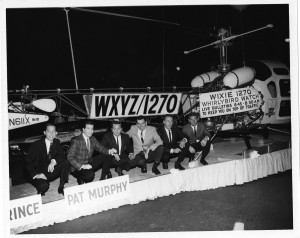
Once again in search for higher ground, in late 1967, Hampton was introduced by a fellow radio acquaintance to John Detz at underground-rocker WABX-FM in Detroit. He was hired for the afternoon drive. About the same time, Jim recalled he got a call from KQV in Pittsburgh. He was offered an on-air position from Mike McCormick, who was the program director at the ABC-owned Top 40 station there. “I couldn’t see myself in Pittsburgh,” Hampton recalls, “but I ultimately got off the air and instead became co-manager of sales at WABX-FM.”
Having set up the new sales department for WABX, Hampton was instrumental in hiring Jim Irrer and Richard Golden for the sales team. Jim went on to say, that, “they became legends and made the station very successful with advertising.”
During his stay at WABX, another radio opportunity was left open for Jim. Late in 1968, there had been talk in the trade that WJBK was soon dropping it’s “beautiful music” format, planning it’s return to Top 40 radio in 1969 for the 50,000-watt daytimer (WJBK’s transmitted-power dropped down to 10,000 watts at night).

The new 1969 WJBK lineup were to include Marc Avery, Conrad Patrick, Hank O’Neil, K.O. Bailey and Tom Dean. Jim Hampton was asked to join the team. He became the music director while doing the all-night show once again. But the format would bomb within a few months after its inception on WJBK. Instead, WJBK decided to go with country. As the rest the lineup goes, Jim found himself out of radio one more time.
But Jim’s radio career was far from over. Ken Draper, the legendary radio programmer who created WCFL in Chicago, was coming to Detroit’s WCAR. Jim’s meeting with Draper went well. He was hired as WCAR’s Production Director. It was a first for Jim, as he said this opportunity “really honed my skills as a producer and writer, which helped me later when I went to LA to become a producer for syndication. WCAR was an amazing station at the time with names like Ray Otis, Specs Howard, Dave Prince, H.B. Phillips, Dan O’Shea, Warren Pierce, Edward Alan Busch to name a few.”
Now nearing the end of 1969, Jim was getting a little restless with the Detroit radio market. The news director at WLS in Chicago, Phil Hayes, an old friend of Jim’s, decided to give him a call. He said Mike McCormick, the new PD, who previously invited Jim over to Pittsburgh’s KQV a few years back, was now looking for a new Production Director for the legendary Windy City station. Jim and his wife decided to leave Detroit that weekend and headed straight for Chicago. After having met Mr. McCormick during an outdoor social event, and “after a few drinks,” that same night, Jim agreed to accept the offered opportunity to work for WLS.
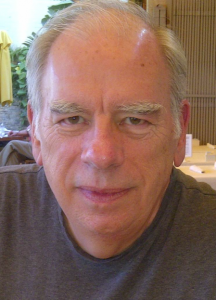
In the ensuing years after his last radio stint at WLS in Chicago, Jim Hampton’s career in broadcasting excelled to greater heights with syndication marketing. While in LA perfecting his craft in production writing and radio syndication, Jim produced over 1,000 specials for the ABC Radio Network and has interviewed many musical stars for radio affiliates across the nation and around the globe as well. Many would include various recorded specials for national distribution home and abroad, including The John Lennon Story, The Bob Seger Story, The Beach Boys Story, The Eagles Story, Michael Jackson, Super ’70s and much, much more.
Today, Jim Hampton resides in the Los Angeles area. But his heart never abated no less the love he always held for the city he affectionately still calls home. A winner of the Aegis and Telly Awards, currently he is CEO of Greenhouse Marketing Group, a marketing and sponsorship sales company that represent many organizations, events and broadcast properties across the United States and worldwide.
MCRFB would like to express our sincere gratitude to Jimmy Hampton for contributing to this exhibit. All photos courtesy of Jim Hampton. We also would like to thank Jim for permitting this website to exhibit his sensational twelve-hour radio special “Radio Recall,” which Jim locally produced for WPON-AM in Pontiac, Michigan for the 2009 Memorial Weekend.
On behalf of George Griggs, Scott Westerman and mcrfb.com, Jim Hampton, thank you so much for sharing once again those wonderful Detroit radio memories you gave us all.
From the MCRFB Aircheck Library, featuring:
(Click on name for audio)
WAMM-AM 1420 (Flint) Jim (Taylor) Hampton 1966
WAMM-AM 1420 (Flint) Jim (Taylor) Hampton w/Stevie Wonder 1966
WXYZ-AM 1270 Jimmy Hampton August, 1966
WXYZ-AM 1270 Jimmy Hampton 1966
WJBK-AM 1500 Jim Hampton 1969
WCAR-AM 1090 Jim Hampton 1970
Addendum (Update): Special thanks once again to Jimmy Hampton for sharing with MCRFB the photos below, added to this exhibit September 8, 2012.
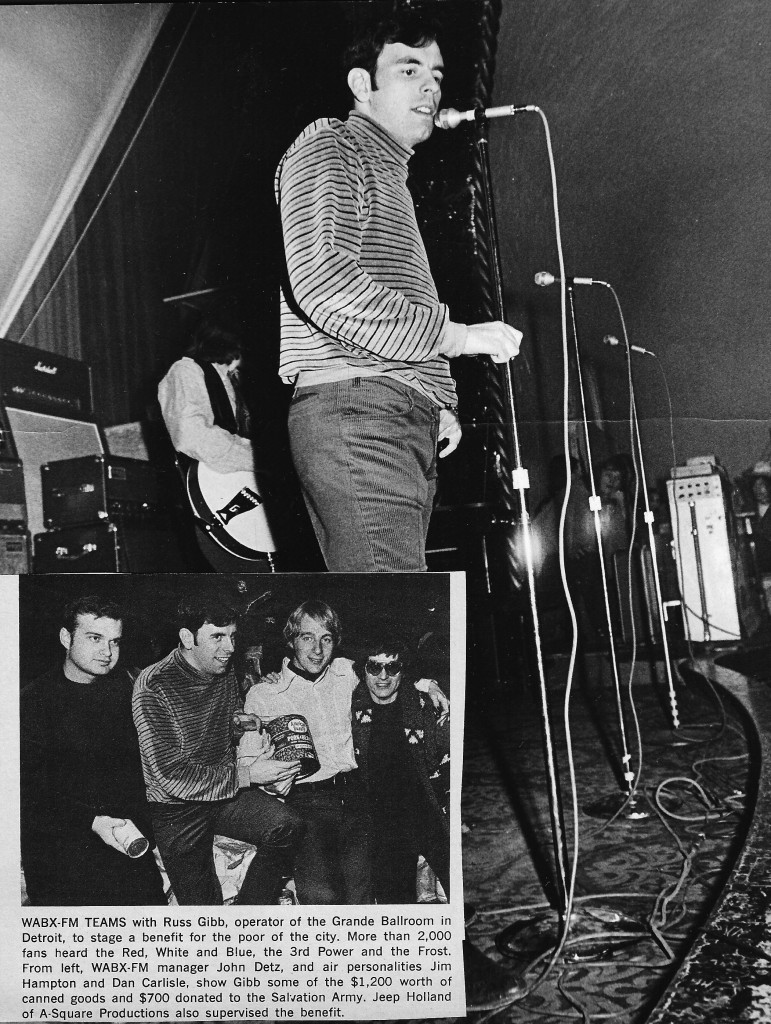
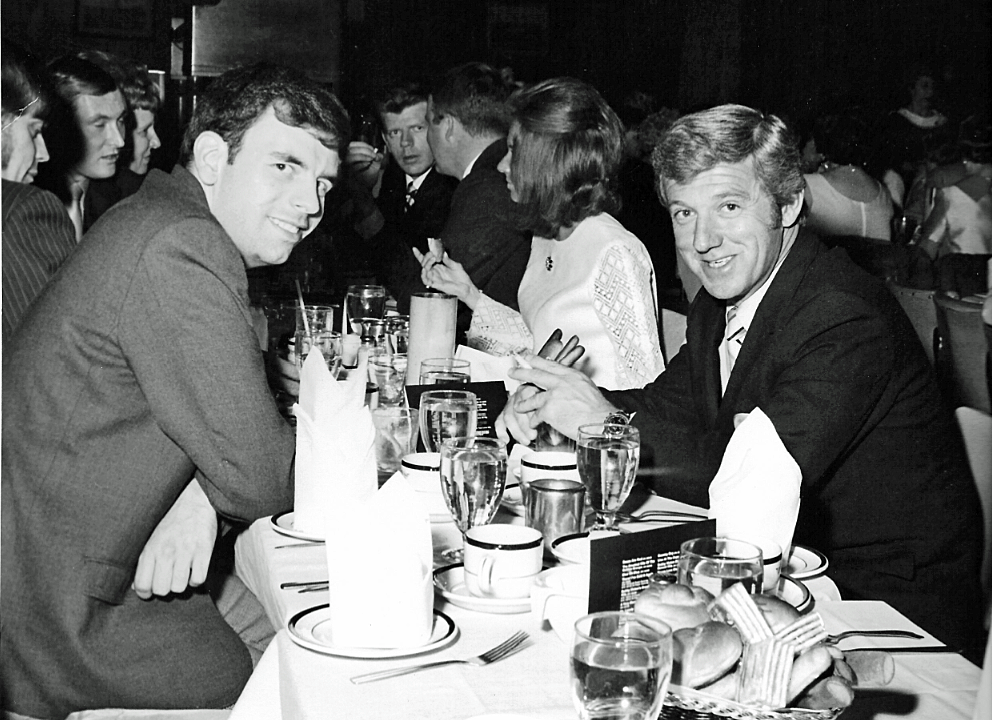
![]()